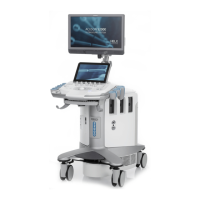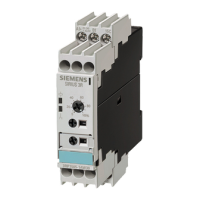10 Virtual Touch Applications
10 - 12 Instructions for Use
Virtual Touch Quantification Scanning Technique Hints
Scanning Techniques to Mitigate Technical Limitations of Virtual Touch
Quantification
During breast imaging with Virtual Touch quantification, shear wave velocity and elasticity
measurements may frequently display "x.xx" in the measured results with certain breast
cancers. This result is typically caused by a low shear wave signal-to-noise ratio (SNR)
due to high tissue stiffness where the excitation pulse from the transducer cannot generate
sufficient shear wave magnitude.
When frequent "x.xx" results are encountered in focal lesions, Siemens recommends
evaluating the elevated shear wave velocities in the periphery of the lesion.
To obtain reproducible results in the liver with Virtual Touch quantification, take
measurements in the right lobe of the liver using an intercostal scanning approach. Advise
the patient to breathe normally and to momentarily stop breathing and then take
measurements. Avoid taking measurements during deep inspiration and breath hold as the
literature cites that this action increases central venous pressure. Elevated central venous
pressure can artificially elevate shear wave velocity and elasticity measurements.
Siemens recommends maintaining a measurement region of interest (ROI) depth between
3 cm and 6 cm to minimize the effects of depth on shear wave velocity and elasticity
measurements.
To obtain reliable and repeatable results with Virtual Touch quantification, apply the
appropriate amount of scanning pressure.
Siemens recommends using minimal to mild compression for optimal results. Applying
excessive pressure with the transducer on the body may artificially elevate shear wave
velocities and result in unreliable shear wave velocity and elasticity.
Measurement values for shear wave velocity, elasticity, and other image display settings
are relative indexes intended only for the purpose of comparison with other measurements
performed using the ACUSON S2000 ultrasound system and the ACUSON S3000
ultrasound system. Absolute values for shear wave velocity and elasticity measurements
may vary among different manufacturers due to multiple system-dependent factors,
including shear wave frequency, excitation beam (push beam) frequency, shear wave
detection techniques, and shear wave velocity and elasticity estimation methods.
Note: The system displays the following message on the screen during Virtual Touch quantification
and in the report if shear wave speed measurements are saved to the report: "Shear wave speed
and elasticity values may vary among manufacturers!"

